In June, DC Comics kicked off the start of its Rebirth initiative. After a wave of criticism surrounding the way they have treated their characters’ rich histories since 2011’s New 52 relaunch, DC has decided to rebrand. They hope that by restoring their characters’ pasts, they will restore readers’ faith in them as well. Do they succeed? That’s what the Comics Beat managing editor Alex Lu and entertainment editor Kyle Pinion are here to discuss. Book by book. Panel by panel.
Note: the reviews below contain **spoilers**. If you want a quick, spoiler-free buy/pass recommendation on the comics in question, check out the bottom of the article for our final verdict.
 New Talent Showcase #1
New Talent Showcase #1
Kyle Pinion: With this being a fifth week, the selections from DC Comics are a bit more slim to choose from than usual. But that doesn’t mean there isn’t a reason to take a jaunt over to your LCS or Comixology, oh no no no. This week marks the first in what will hopefully be a continuing showcase of DC’s Talent Development Workshop, which has been discussed a bit here by Heidi in our news offerings, but in short (and as elaborated on in the intro page written by Bobbie Chase): DC offered a workshop for up and coming comic scribes last year taught by Scott Snyder. The publisher did the same for artists too, with Jim Lee and Klaus Janson mentoring that group. This comic provides a spotlight on those participating writers, and some of the artists.
It’s a valiant effort, but does it produce a comic that’s worth your hard earned $7.99 on a week when not much else is coming out? Well, that’s a bit more of a complicated answer.
The first thing that needs to be noted is that this is not loaded with typical comic stories in the sense that readers are going to come away satisfied with a particular resolution for any scenario introduced. There’s no second and third acts presented here at all, instead the various vignettes as they exist here are more like pitches and play as glorified preludes to what each creator’s larger pitch for a certain character looks like. Most of them hew fairly closely to established portrayals, but there are a couple of nice standouts that break the mold just enough that Alex and I were intrigued to see more – at least once we rewired our superhero reading brains to accept the format of these tales.
Alex Lu: Indeed, coming into this book, I expected and hoped to find stories that brought refreshing new ideas to the table. While this book certainly meets the standard DC quota for madness and epic mayhem, the stories that truly shine are the ones that subvert our aesthetic expectations and show us atypical sides of our archetypal heroes.
For example, in “The Amazonian Job” by writer Emma Beeby and artist Minkyu Jung with colors by Trish Mulvihill, we get to witness Catwoman team up with Wonder Woman. While I certainly haven’t read even the majority of DC’s vast backlog of titles, I don’t think I’ve ever heard of this character pairing come up before. It’s surprising, then, that it works so well. Catwoman and Wonder Woman have very little in common, but the contrast in their speaking voices and goals serves to highlight and enhance our understanding of their characters. Where Wonder Woman strongly honors heritage and tradition, Catwoman has no respect for anything beyond what is purely pragmatic. It’s amusing to watch Catwoman verbally jab at the patient diplomat of Themyscira. She even calls her “Spangle-pants” at one point. However, the one thing that seems to get under Wonder Woman’s skin is when Catwoman calls her “princess,” which she sternly corrects with “queen.” Beeby gives Diana Prince taut lips and a steely glare that tell us everything we need to know here.
Beyond our two leads, the story that brings them together is particularly intriguing. As Wonder Woman and Catwoman banter, we are treated to a scene where a beefy blonde man in a suit terrorizes a submarine captain. He paralyzes the naval officer with a simple snap of his fingers and tells a story about how the gods were once all-powerful, but locked away some of their strengths so that humanity could thrive. Now, however, this god– revealed to be Zeus as he sends bolts of lightning through the captain’s head, wants that power back. On a purely emotional level, it’s refreshing to see a Wonder Woman story where Ares is not the god manipulating events behind the scenes. However, the intrigue does not end here, because at the end of the tale it is revealed that the power his hidden away on a box in Themyscira– and Wonder Woman has decided to work with Catwoman because she needs the jewel thief to steal the box away from her sisters before Zeus gets to it. It’s a testament to the creative team’s strengths that they’re able to introduce such a complex web of allegiances in so short a time and definitely makes this a story I’m willing to read more of in the future.
Kyle, in one of our conversations you mentioned that the Hawkgirl story in this book was a highlight for you. Care to enlighten us as to why?
Kyle: It’s just as simple as it’s a neat little take on the character that falls right in line with the world building that’s already occurred around Thanagarians since the 2011 reboot, which it should be noted is the main driving force of the New Talent Workshop: cultivating newer to comics writers within the boundaries of the shared universe setting.
While quite a few of these stories were well-written, I didn’t necessarily come away thinking “well, that brought something new to the table that sold me on their take on that character.” However, I was really intrigued by Erica Schultz and Sonny Liew’s revamp of Shayera Thal aka Hawkgirl, whom they pitch as a detective who also harbors the secret of her past as a Thanagarian refugee. It’s a bit of a Martian Manhunter spin on the character, but one that worked well for me. I especially liked the moment where she utilizes her native weaponry to uncover items related to a crime scene she was called to. Schultz writes Shayera with a sort of warmth I haven’t seen in some time; she often ends up molded more into a “warrior woman with wings.”
Schultz’s and Liew’s take on the character borrows from several other incarnations of Hawkwoman and Hawkgirl. Shayera shares a name with the last character to be referred to as Hawkwoman, her ethnicity may be a bit more in line with the James Robinson/Earth 2 version of Hawkgirl, and her character traits reminded me more of the humanistic Kendra Saunders of JSA fame. Schultz produces a really neat blend of the past to create a version of the character that is quickly easy to grasp (when’s the last time that’s ever been true of the Hawks?) for the unfamiliar, and is set into a dilemma that underscores the challenges she faces as a “stranger in a strange land”.
On top of that, it never hurts to have one of the best cartoonists in comics visually interpreting your script. And Sonny Liew continues to bring it, no matter the project. His superhero work brings a flair that stands apart from anything else on the shelves…nobody can imitate him, and so, much like his art on Doctor Fate, there’s a sense of all-ages adventure, but also a sense of creative energy that leaves you compelled to see what the man’s going to produce next. I’m utterly enamored with how he transmutes superheroes into something so specifically his. I hope DC gives Schultz and Liew a chance to partner up for a mini (at least!). I’d read the heck out of it.
You know Alex, the other story I was really into was Chris Sebela and David Messina’s peek in on Deadman. Did that one light your fire at all?
Alex: Yes! Christopher Sebela is a rising star and his work here with David Messina and colorist Moreno Dinisio is quite impressive. While Sara Vaughn’s and Lan Medina’s take on the character in Deadman: Dark Mansion of Forbidden Love plays up the more traditionally gothic and serious elements of the character, the creative team of the “Killing Time” short story presents a more contemporary take on Boston Brand.
While I’m rarely a fan of liberal captions in my comics, they’re basically a necessity in a book like Deadman where the lead can’t speak to living people. Sebela actually uses them to decent effect in this story, giving us a tour of what life is like when you can do anything but can’t be be with anyone. Boston loses his personal “standards” and watches every movie that comes out. He spies on the president for fun and ghosts into “old haunts” until they all “become a bunch of condos for yuppies.” It’s an interesting perspective that reveals that if you wait around long enough after dying, you’ll find that your body was just the first part of you to go rather than the last.
David Messina’s art is quite impressive throughout the story. Of particular note are his cityscapes, which loom throughout the urban setting of the tale. His buildings are immaculate and highly detailed, giving us a good feel for just how vast Boston’s world is. Moreover, the brief moments of action in this story are visually dynamic. The most impressive example of this is a panel where we see a man emerging from his car, firing bullets that seem to fly off the page as Deadman possesses a man in the background and a woman in the foreground to help them dodge the projectiles. It’s good looking work and is something I would like to see more of.
While nothing about this story felt revolutionary to me, I would definitely call it a highlight of the book for its cohesion and breezy feel. Were there any other stories in the Talent Showcase that stuck out to you, Kyle? How did you feel about vets like Khary Randolph and Barnaby Bagenda producing work in this book?
Kyle: I quite enjoyed the Hena Khan/Emanuela Lupacchino Wonder Girl story: “Digging Up Demons”, which leaned hard into the cave diving, explorer parentage of Cassandra Sandsmark. Cassandra’s character has been treated pretty poorly since the New 52 relaunch, so this story acts as a nice about-face…a bit of a Rebirth if you will! As for the Randolph and Bagenda’s contributions, I think they’re most welcome, though the stories they’re attached didn’t do a whole lot for me. I’m happy to see Bagenda back on Kyle Rayner and Michael Moreci’s script is awfully sweet to say the least, but it falls a bit victim to what a lot of the stories here end up having to battle with, which is just not having enough space to dig into their stories. I’d love to see Moreci get a little more breathing room to really explore Kyle and Carol’s relationship, but as it stands, this introductory salvo ended on a strange note for me. I could see this spinning out further into a compelling relationship drama, so on that end I guess it did enough of the trick it needed to do, though.
As for Randolph’s and Vita Ayala’s Wonder Woman story– their take on Diana was way too heavy on the sword and shield and sometimes brutish tendencies of the New 52 Wonder Woman for my taste. Also, this is a ridiculous nitpick, but I was really bothered by the fact that Diana refers to The Flash as Wally, even though it’s the Barry costume design and this is clearly an on-brand Rebirth take on Wonder Woman. I know I should just ignore those things in a book where continuity doesn’t particularly matter, but I guess my frustration with this element of the story provides some indication about how much trouble I was having with this story to begin with.
Anyhow, as with any book of this nature, it’s a mixed bag, and some of these new voices will grab you dependent upon what you’re specifically looking for in your DC adventuring. Given the price tag, I’d probably recommend a browse first, and if just enough catches your eye then going from there. What do you think, Alex?
Alex: I agree. $7.99 is no laughing matter, but you do get 74~ pages of content so there’s sure to be something that will catch your eye. This title might be of particular note if you consider yourself a forward thinking reader who wants to get a look at where DC editorial is heading or at the talents you’ll likely see representing the creative side of the industry as a whole in the years to come.
Final Verdict: Browse
Miss any of our earlier reviews? Check out our full archive!


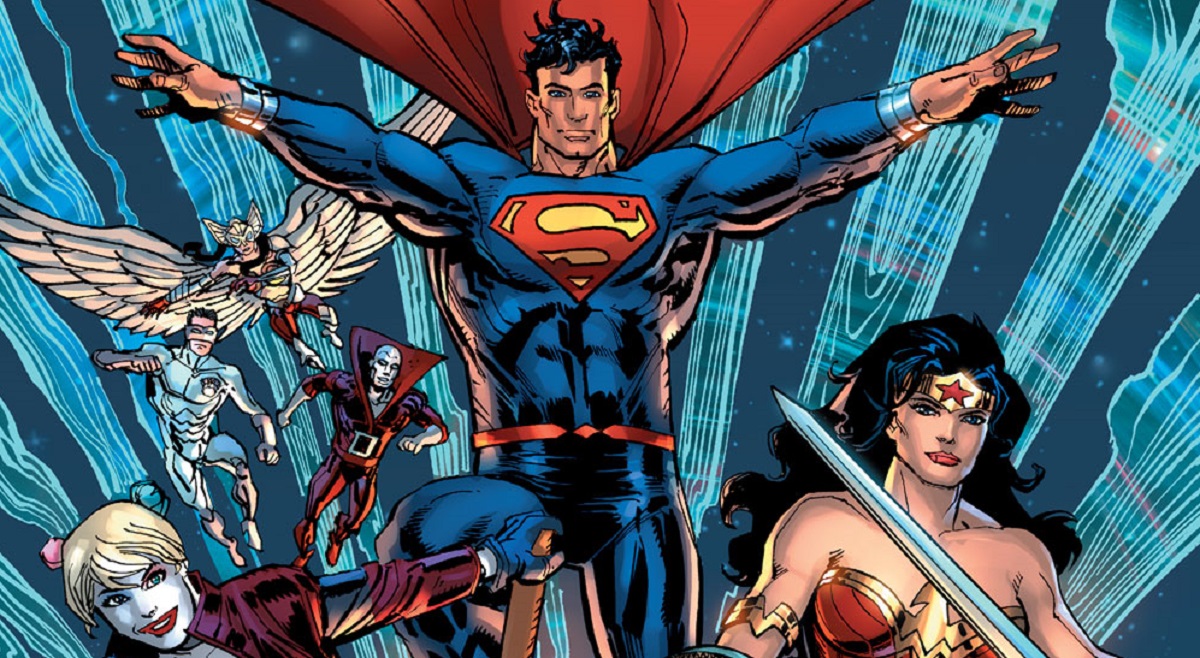
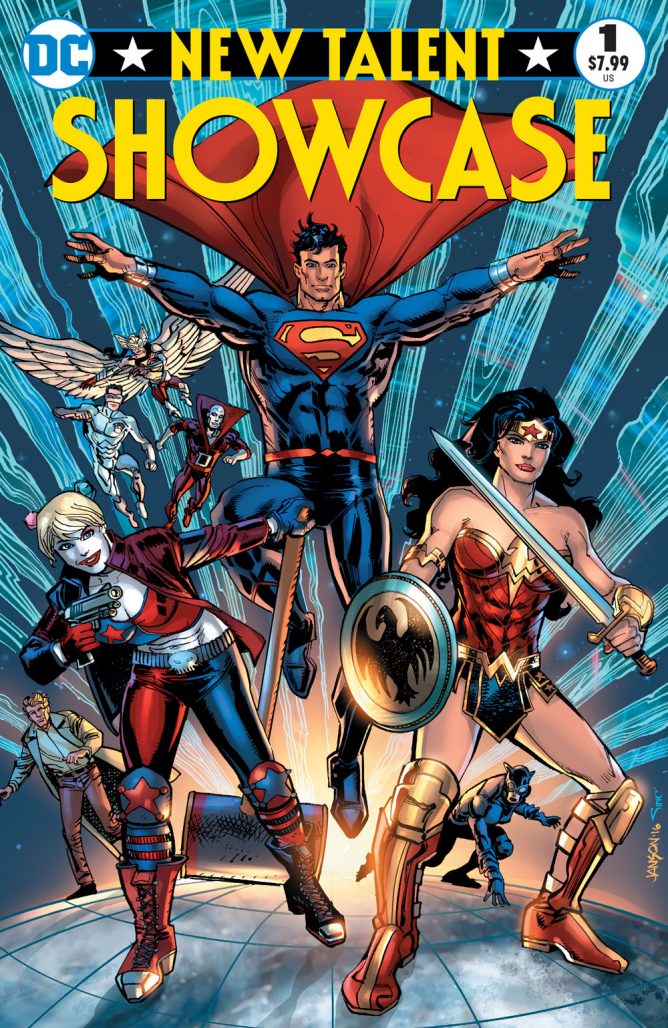
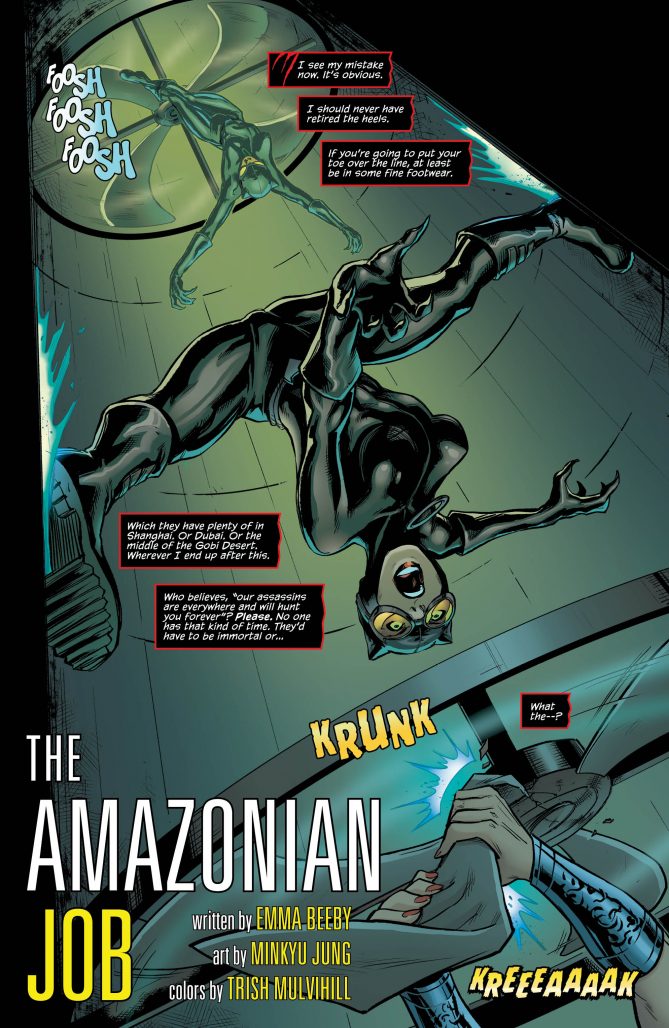
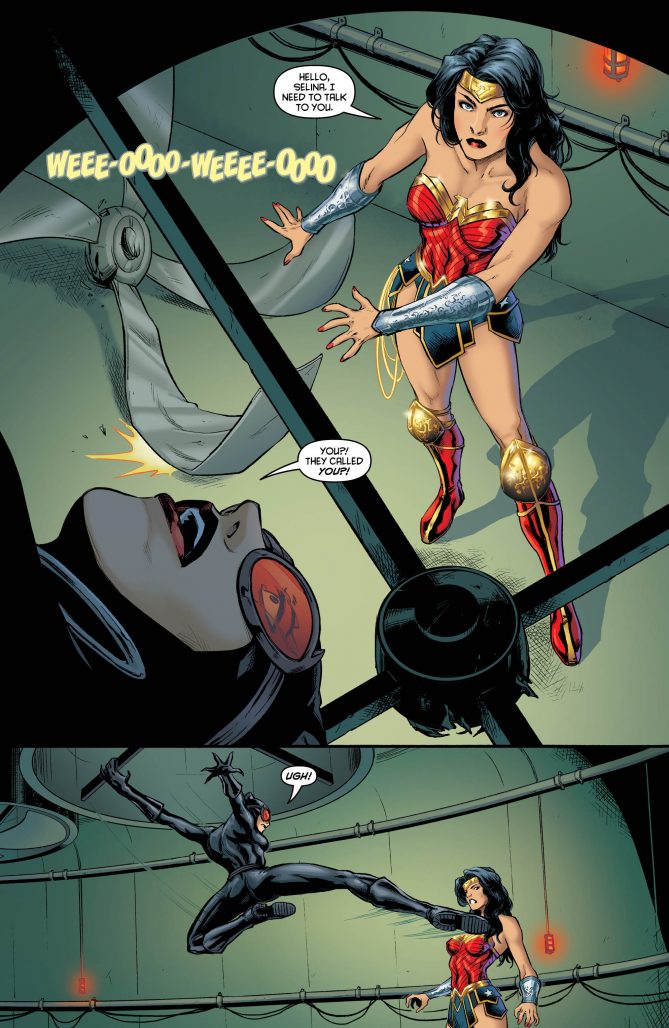
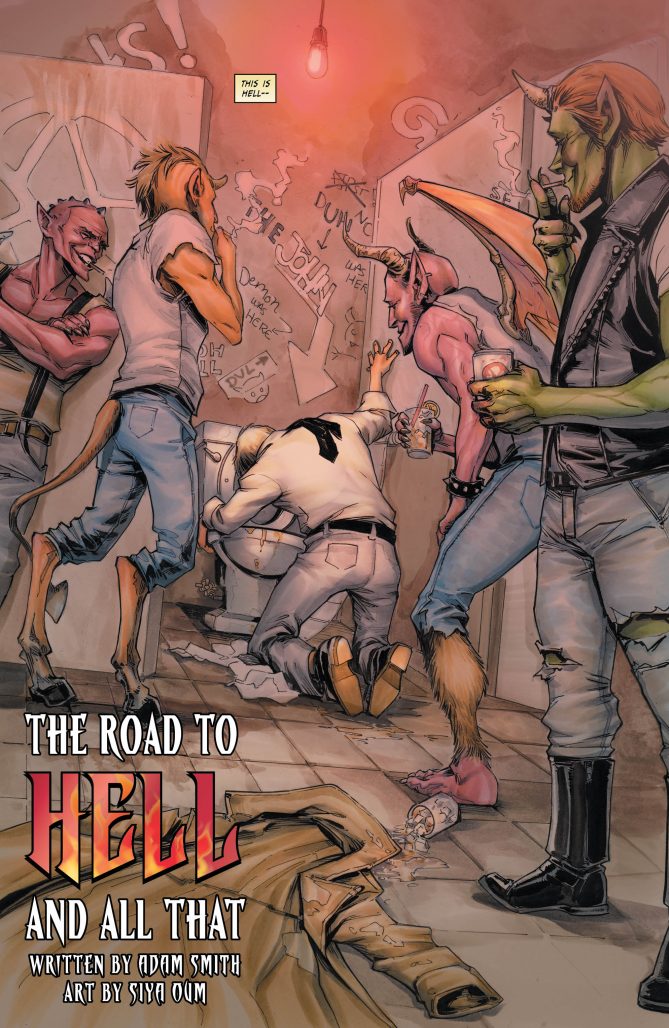
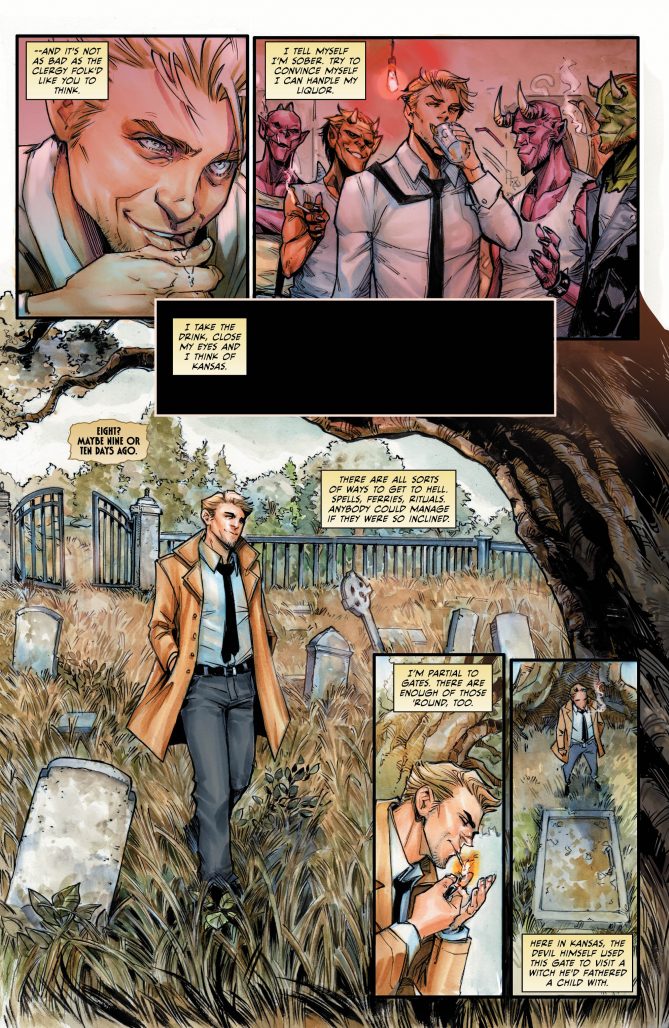
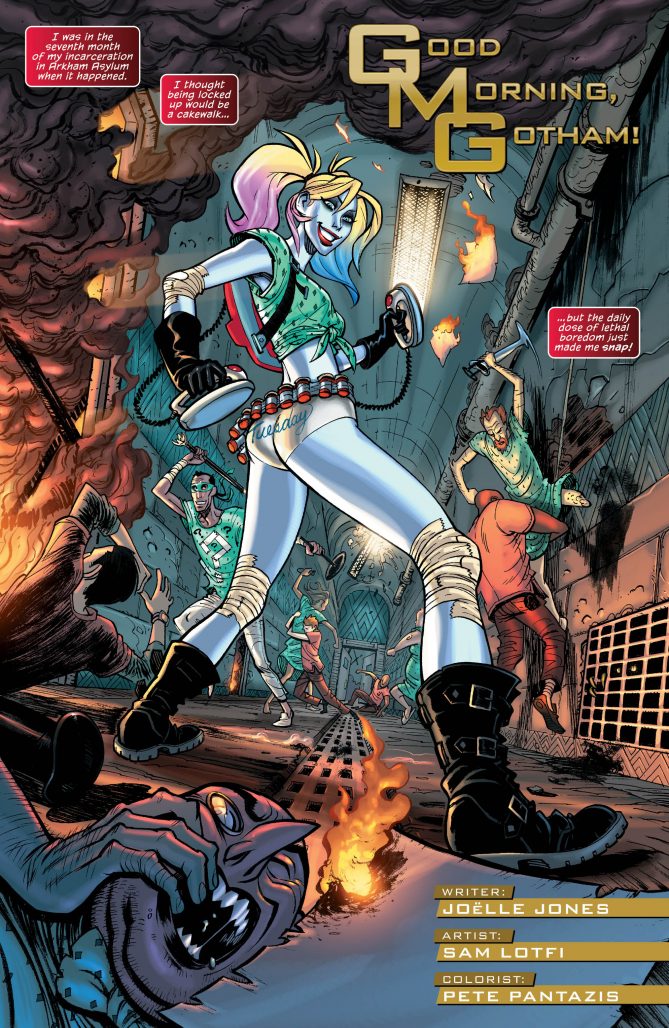
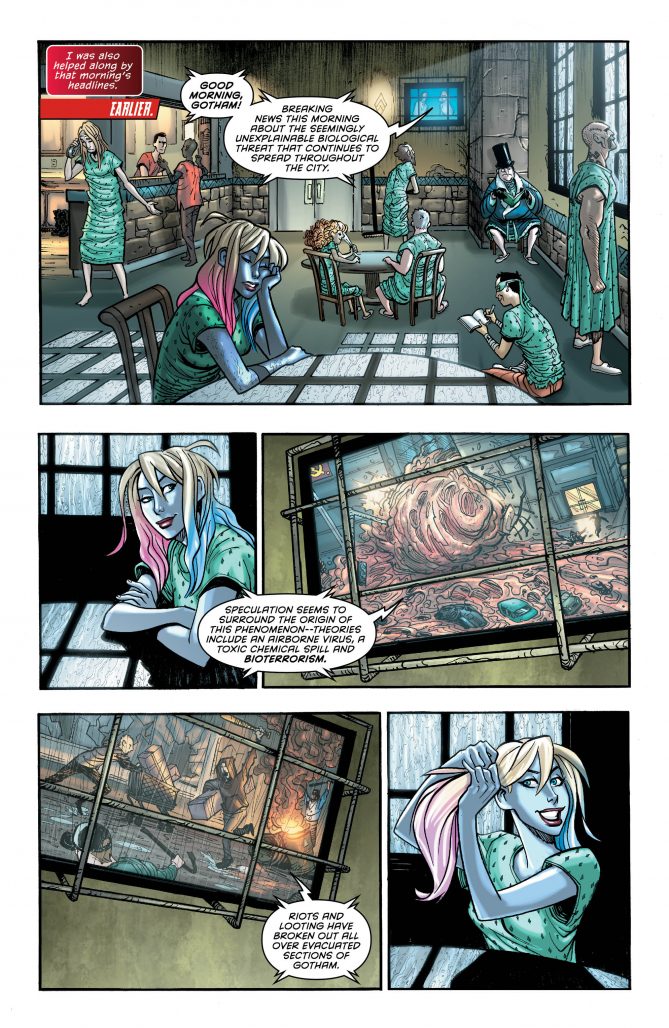


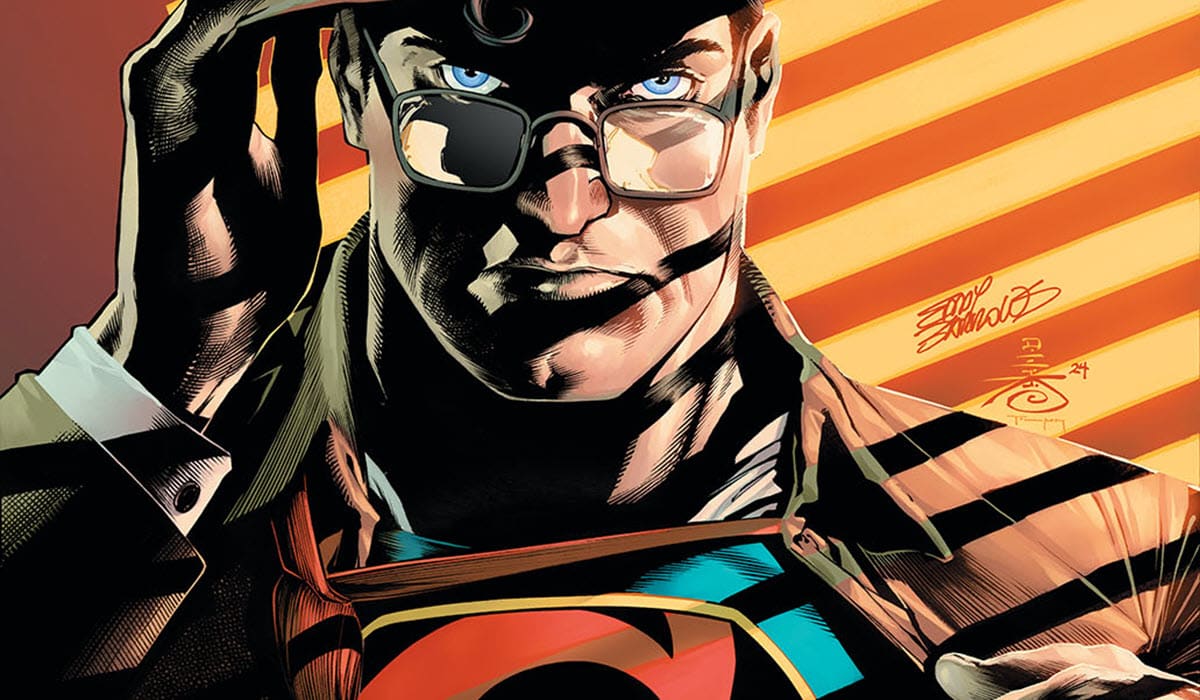
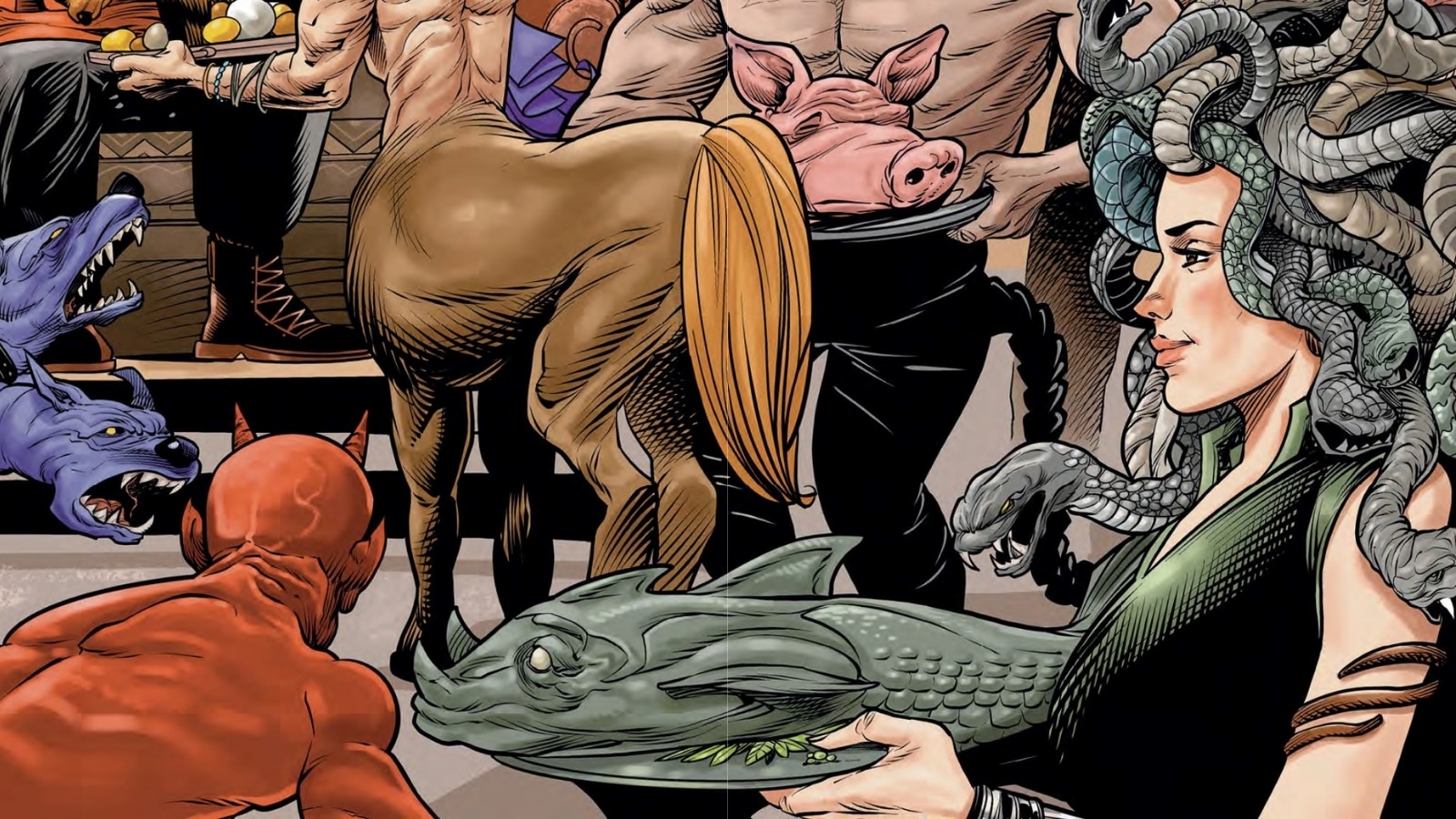


Does anyone else find it funny that the cover to the “New Talent Showcase” is drawn by a 75-year-old man who’s been working in the industry for five decades?
Just me?
Correcting myself: I thought it was Neal Adams as inked by Klaus, but it’s just Klaus who is only 64 and I know does a lot of talent training for DC.
Still funny, tho.
Kiel, thanks for pointing out the name of the cover artist; it actually startled me, I had assumed it was done by a newcomer to cover art… the image did not grab me at all. I DID browse through this issue today, but carefully put it back on the shelf and kept my $8 in my pocket, no sale.
Hey guys, enjoy this feature quite a bit! Look forward to it every week.
The only time I think Wonder Woman and Catwoman teamed up was in Wonder Woman (first series) #201. This was during WW’s “Diana Prince” era. Catwoman had the bluish costume with the huge face mask. I forget the details, but Catwoman was definitely stealing something Diana needed, or something to that effect!
http://www.comics.org/issue/25254/
Kiel– good observation. I totally missed it, though I admit most big two comics covers don’t grab me. I have a tendency to just gloss over them unless they’re particularly interesting.
I suppose it’s worth noting that the physical print quality of this title was lower than I thought it would be. At $7.99 I expected a cover print stock similar to the one used for DKIII issues or at least stock like those used on the Vertigo CMYK/SFX anthologies. Instead we got a slightly glossier version of the normal stock, which actually feels cheaper than the standard gloss version of that paper for some reason. C’est la vie, I suppose.
Joseph, thanks a lot for the compliment and for the insight! What a peculiar looking book. I’ll have to take a peek.
And here:
http://www.comics.org/issue/168980/cover/4/
Comments are closed.